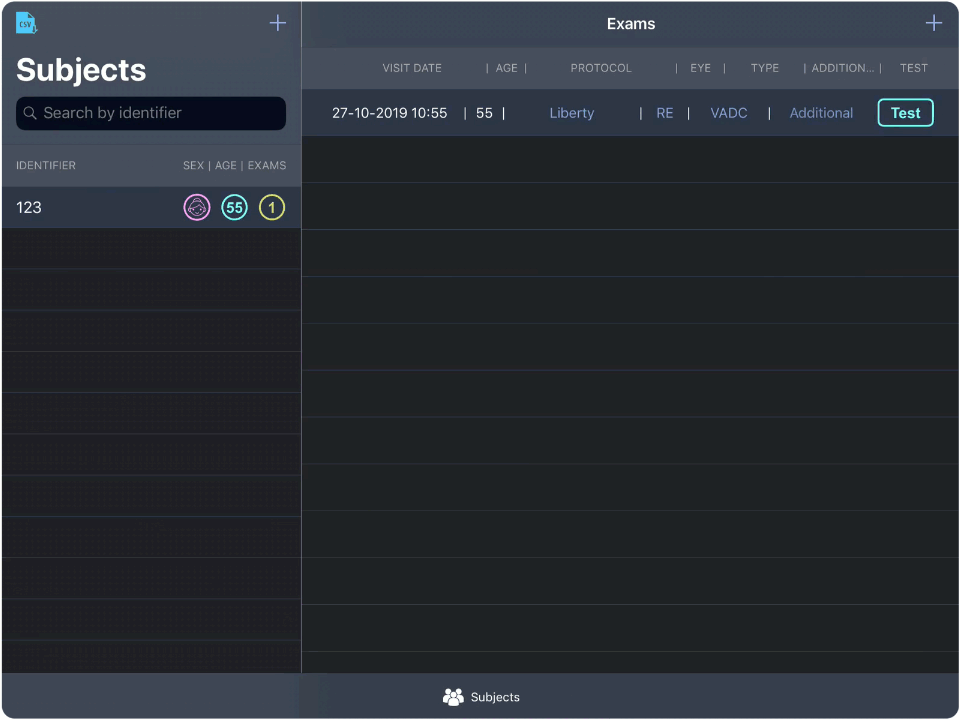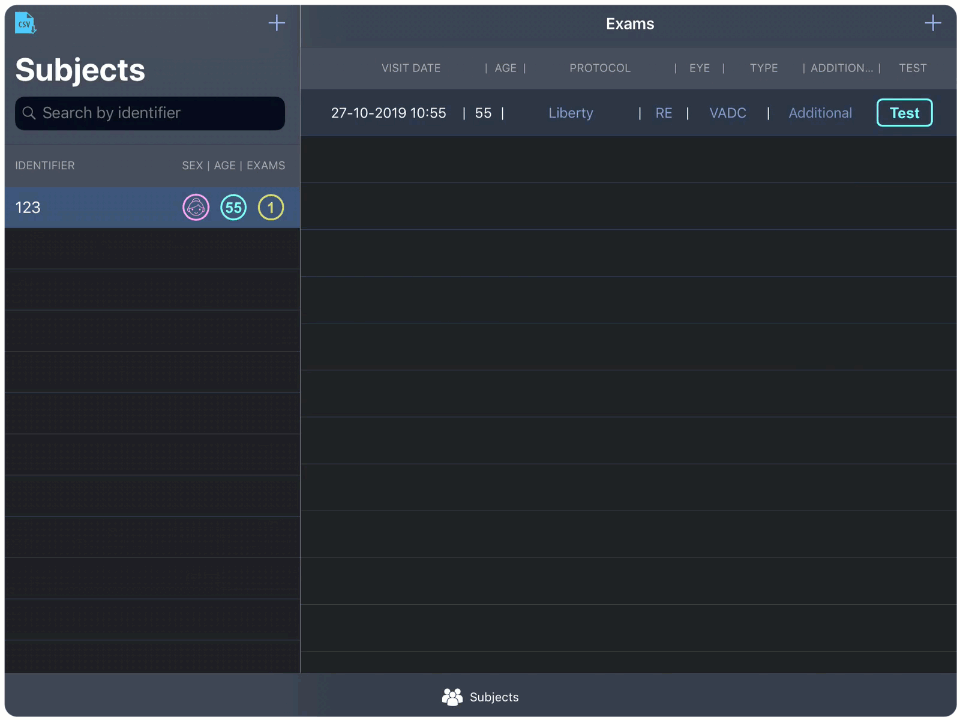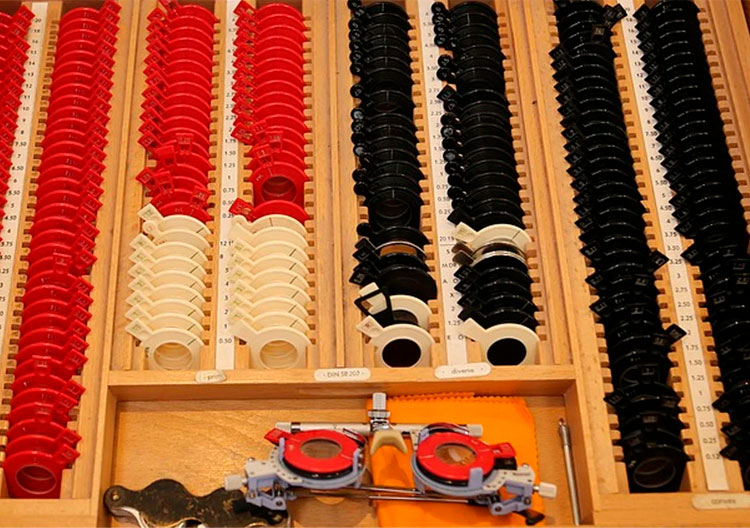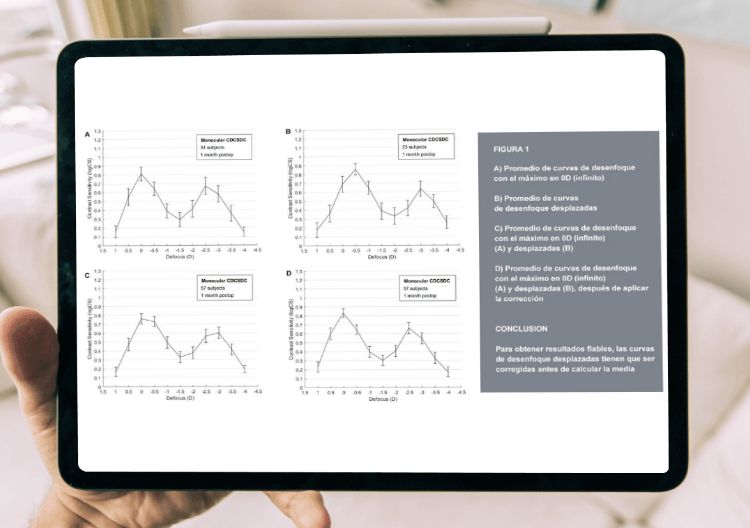Preparing the lensesto measure a Defocus Curve |
|
|
|
In this article we will explain the lens preparation procedure to be carried out before starting to measure a Defocus Curve, in general with any test, and in particular with the Multifocal Lens Analyzer PRO (MLA).
There are three fundamental points that we have to take into account before starting the measurement with any test:
How far away from our patient do we put the test?Bringing an object close to the patient produces a change in the light's vergence similar to that which can be induced with a spherical lens. This is the basis of the defocus lens, where we know that the dioptric value of the defocus lens (D) corresponds to the inverse of the distance (d) in meters (D = 1/-d(m)). To calculate the visual performance at 40 cm we can use a defocus lens of 1/-0.4 m = -2.5 D. Following the same reasoning it is important to know that if we put the test at 4 m we are inducing a change of vergence of -0.25 D (1/-4 m = - 0.25 D) (See the header image) What is our patient's refraction in infinity?If we graduate a patient with a test at 4 m, and we obtain that the patient is emmetropic, we must consider that putting the test at 4 m is similar to putting a lens of -0.25 D when the test is at Infinity. A patient who is emmetropic at 4 m is therefore not really emmetropic but rather myopic at -0.25 D. The patient who is emmetropic would be the one who gives us +0.25 D when refracting with the test at 4 m. The first important point is to calculate the Infinite Refraction considering the distance to which we have taken the refraction. In a patient for whom we have obtained refraction of (+1.00)(-0.50)@100 at 4 m, his real infinity graduation will be (+0.75)(-0.50)@100 since we have to add the -0.25 D that we were compensating him for the vergence distance. When we make a defocus curve at 4 m and we want the maximum peak to be at 0 D (infinity) we must take into account:
What range of defocus are we going to measure?The last important point lies in the defocus lenses that we are going to use since to the base lenses that we have already put to the patient (section 2) we must add the defocus lenses, which we will be changing. For example, if we start the test with a +1.00 D of defocus, in the first defocus the patient will have a -0.50@100 cylinder and the combination of three spherical components: (+0.75D for Infinity Refraction) + (+0.25 D for Vergency correction at 4 m) + (+1.00 D for the first defocus lens) = (+2.00 D)(-0.50)100 How can we minimize the artifacts produced by the accumulation of lenses?The more lenses the trial frame accumulates, the more possibilities we have of diminishing the performance, for example, if they lenses are not totally clean, if there is a small tilt between them, etc. This is why it is recommended to use only two lenses in each step, a sphere (spherical refraction+vergence+defocus) + a cylinder. We can prepare our lenses in advance to avoid accumulating many spherical lenses in the trial frame or we can do the calculation in a mental way, but obviously this can lead us to errors if we are not completely concentrated. The advantage of MLA PRO is that it calculates the sum of the three spherical components in such a way that only by introducing the spherical component of the refraction at infinity in the section "Additional", the app will tell us when the test starts and after each defocus what is the spherical lens to use in combination with the cylinder of the patient's refraction.  Include the spherical component of the refraction in the additional informationThis image shows how we select the spherical component of the patient's infinite refraction.  Place the Sphere that indicates the App after each stepWhen you start, the app will tell you the spherical component to be placed next to the cylindrical component that you will have already placed on the trial frame. Don't make the following common mistake!A frequent error is usually made when we have the test of our cabinet at 3 m (-0.33D), 5m (-0.20 D) or 6 m (-0.17 D) and the refraction is made at these distances without calculating the equivalent refraction at infinity that would be adding the previous dioptric values to the obtained refraction. Some clinicians do not calculate the corresponding refraction at infinity and then when they use the MLA at 2 m for example including that refraction and the +0.50 D lens of vergence correction, the curve can give them a shift (especially if they graduated to 3 m), since there is an error in the calculation of the refraction at infinity. |



